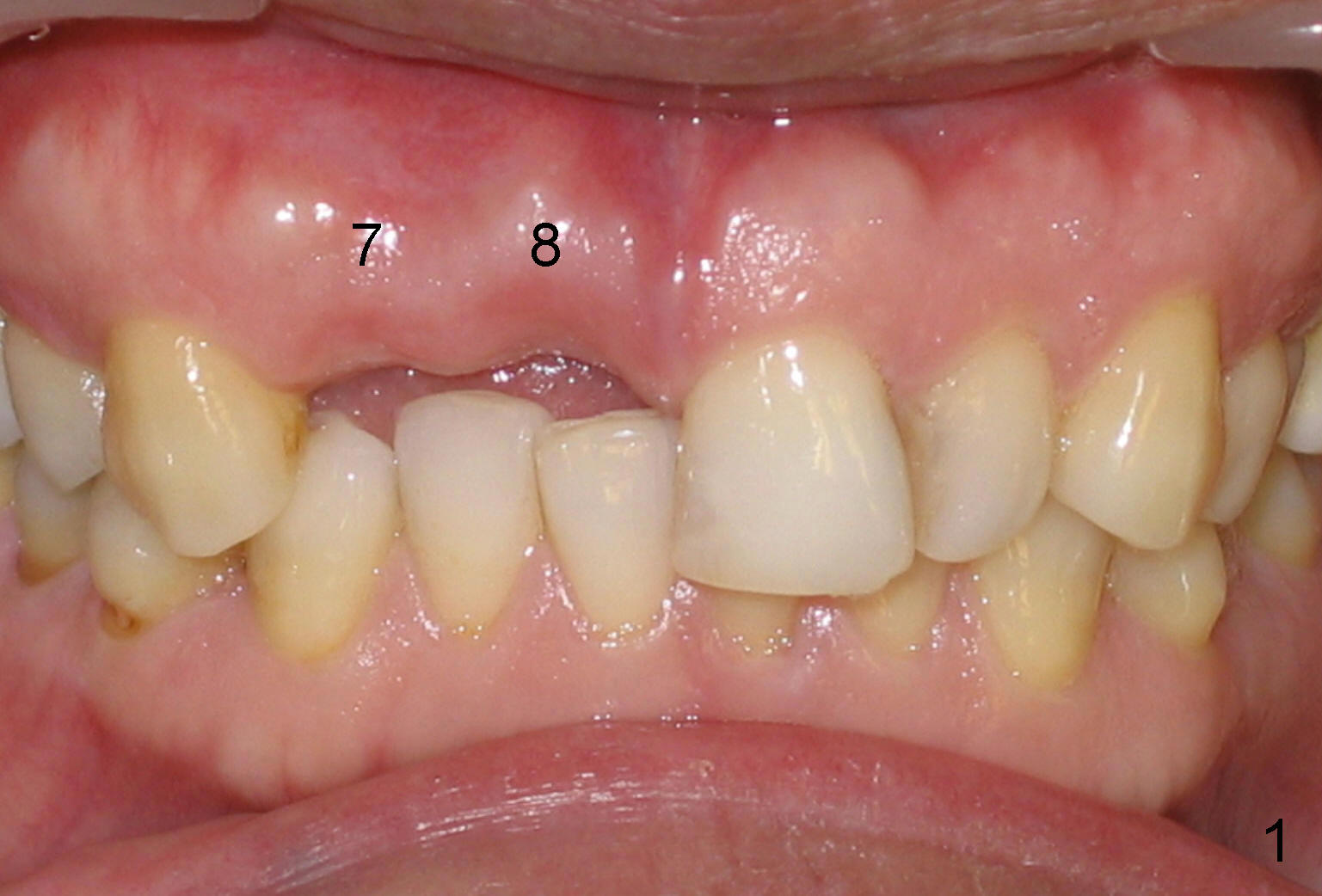
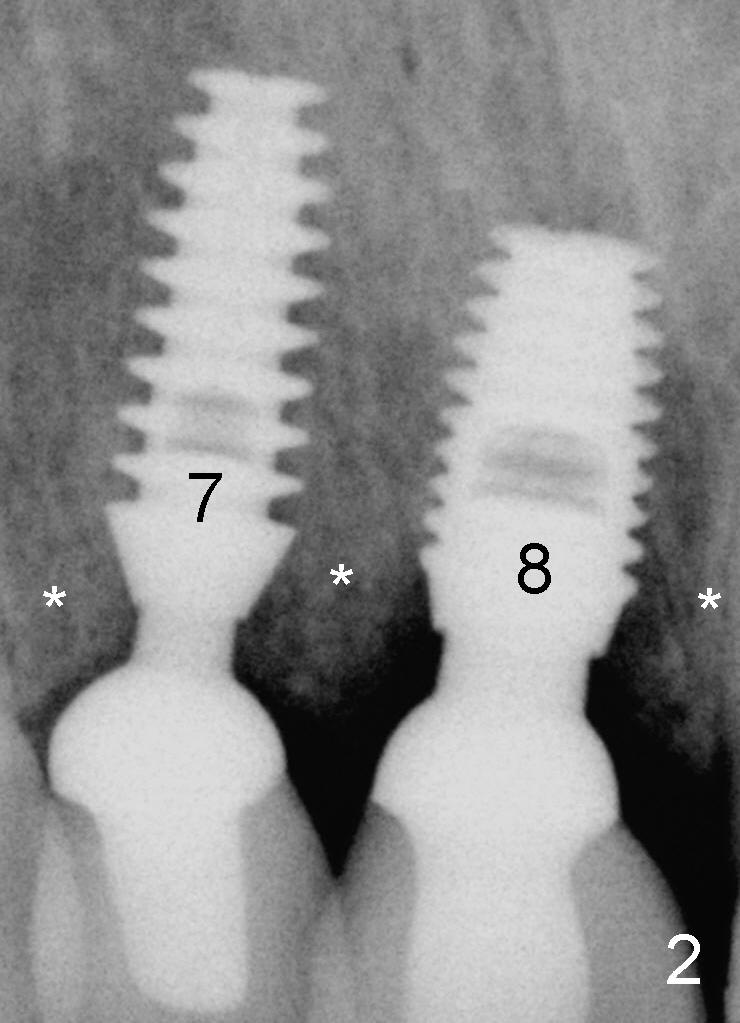
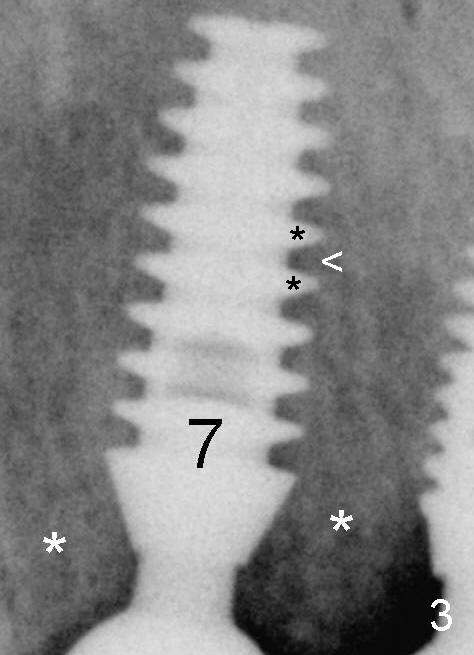
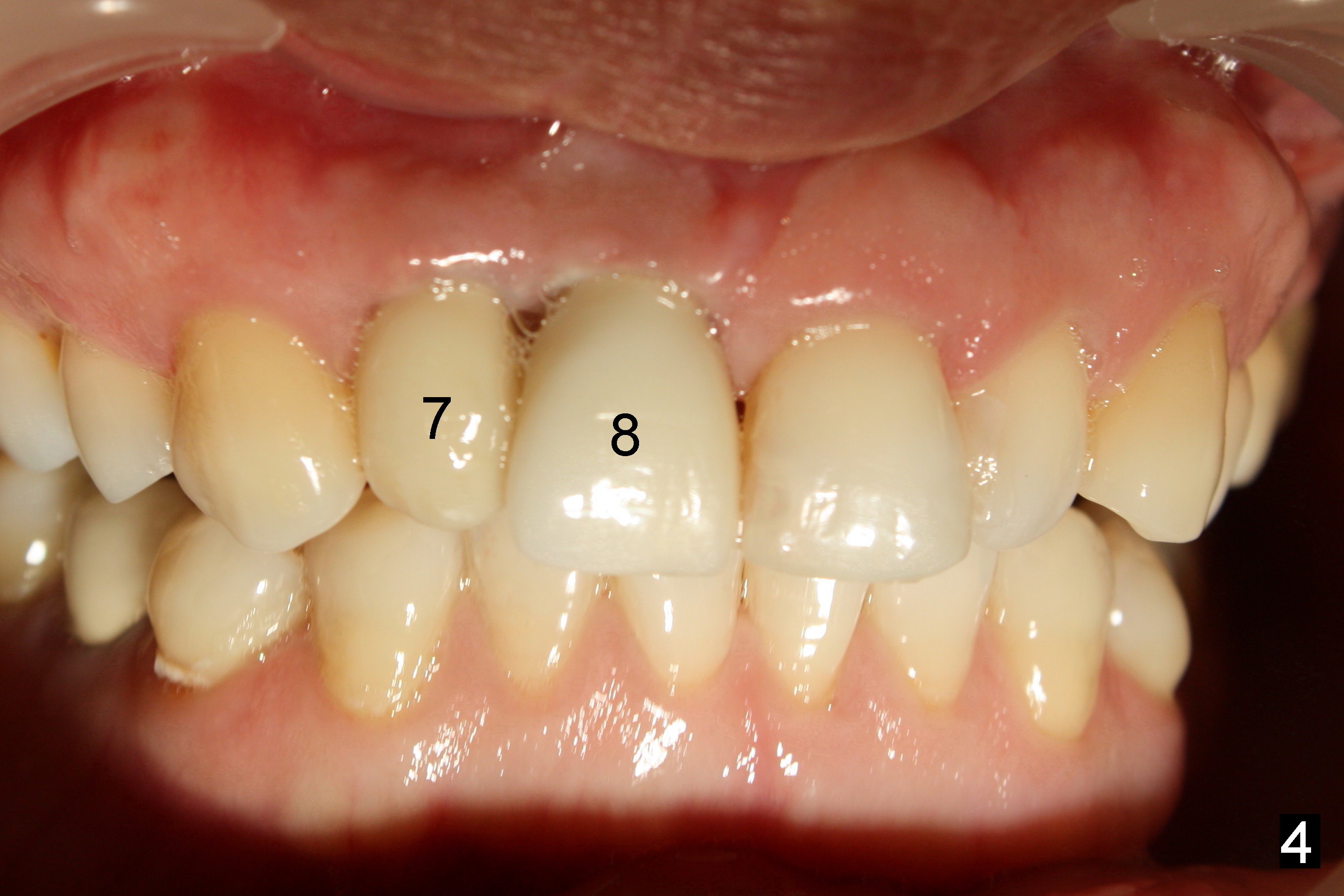
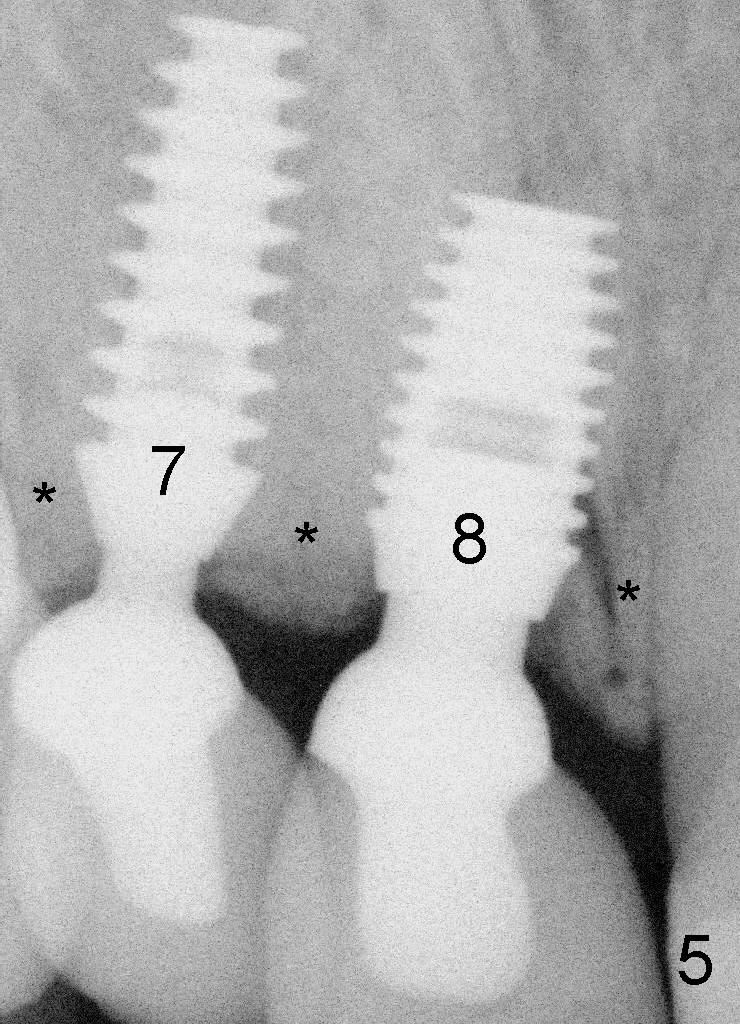
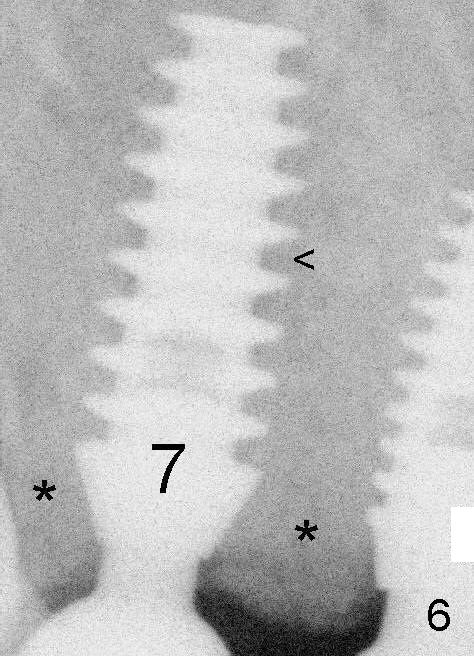
 |
 |
 |
 |
 |
 |
Implants in the Front
It is probably the most challenging to place and restore implant(s) in the front, because of cosmetic issues. Ms. Zeng is an elementary school teacher. She has lost two front teeth (Fig.1: #7,8). Her bite is pretty tight. The upper front teeth almost totally cover the lower ones. When she bites, the lower teeth may exert excessive unfavorable force on the top ones. In one word, it is a tough case, but it needs to be done, because young, immature kids (students) are kidding her.
Fig. 2 shows that two implants have just been restored by two crowns. Fig.4 and 5 show her condition after two years of functioning. Compare the density of bone surrounding these two implants (Fig.2,5 *). The bone early on is as soft as pine wood (Fig.2); the bone after usage is as solid as marble (Fig.5). Daily chewing makes bone around the implants stronger.
At higher magnification (from Fig.2 to 3; 5 to 6), initially bone (Fig.3 >) does not go completely into the space between implant threads (*). As time passes, bone appears to fill the space completely (Fig.6 >). It in turn makes the implants stronger and more stable.
Xin Wei, DDS, PhD, MS 1st edition 05/31/2012, last revision 09/27/2012